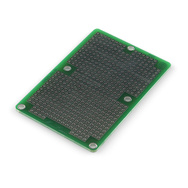First of all, I spent a few hours working on the power supply enclosure. I redid the wiring slightly to power up both the PowerSwitch Tail relay and the Raspberry PI. The picture on the left below shows the PSU enclosure rewired. There are some bare wires that will be wired in to the PST. There are also wires with connectors on the end. They will plug in to a USB power plug for the raspberry pi. The red and black wires connect to the fan. The pi will power that.
The middle picture shows the PowerSwitch Tail wired in to the box.
The picture on the right shows the whole project wired up and working. You can see the wires plugged in to the USB power converter for the pi.
One problem I can see is that the PSU is not going to be big enough for this project. I am thinking that I would like to try cutting apart two PSUs and combining them into one big project box. I talked to Dan at the Makerspace and he thinks it should be doable. I would use a cut-off saw to cut one end off of each PSU. Then, I would use the TIG welder to connect them together. Should be a fun project to learn to use some metal working tools.
Another problem I had is that the circuit does NOT work to detect electricity in water. It works great when a wire is used to complete the circuit. However, when I put the end of the wire in a small cup of water, the pi does not detect a current coming in.
Someone told me that I need a potentiometer in the circuit so I can variably adjust the resistance. I'll have to research this some more.
 Finally, I have started thinking about how to make a circuit board for this project. There are basically two options. First, I could solder all the components and connections on a circuit board like the one to the right. Or, I could make my own circuit board using the Makerspace's CNC Engraver. The Engraver may be more work but I would be learning a new skill, a new machine, and possibly have a way to make more of the circuit board quickly. I might try both methods because I can.
Finally, I have started thinking about how to make a circuit board for this project. There are basically two options. First, I could solder all the components and connections on a circuit board like the one to the right. Or, I could make my own circuit board using the Makerspace's CNC Engraver. The Engraver may be more work but I would be learning a new skill, a new machine, and possibly have a way to make more of the circuit board quickly. I might try both methods because I can.


No comments:
Post a Comment